Term sensory play can seem like another fad, brought up to confuse parents and add yet another task to their already overloaded to-do list. However, it’s nothing new and revolutionary, just a name for the many activities that children are naturally engaging in – activities in which they explore the world around them using their senses.
Cognitive development of a child
The most influential theory of child’s cognitive development is a theory by Swiss psychologist Jean Piaget. According to him, children go through 4 critical stages of cognitive development. Each stage is marked by shifts in how kids understand the world and allow for a higher level of abstraction. For a detailed overview of each stage, read our article about cognitive development.
Today we will focus on the sensorimotor stage, the first significant stage of cognitive development.
In this stage child rapidly grows neural connections as a result of stimulation from the environment and there is much we can do to support it. Everything child learns here will be used as a building block for new ideas and concepts in later stages.
Sensorimotor stage
The sensorimotor stage begins at birth (some say even before, as soon as the child is capable of receiving environmental input) and lasts until around the age of 2. During this stage it’s all about senses – babies stare, listen, lick, touch and smell objects around them and that shapes their understanding of the world. Receiving input is one part of the process, the other is responding to that input. And for that, the child must fine-tune their motor skills. That is another big task of this stage – building a wider range of possible actions, from grabbing and squeezing to drawing and pulling the zipper. More developed motor skills allow the child to experience even more sensory input and this circular process form the basis for learning.
As we said, senses are so integral to the way babies perceive the world, that they think objects stop existing when they don’t see them. Many games we play with infants such as peekaboo use that concept to surprise and delight baby. Piaget called that concept object permanence and defined it as a child’s ability to know that an object still exists even when they don’t perceive it. He observed that this ability develops around 8 months of age. This has another implication when we leave infants alone, they don’t know that it is temporary, they feel we are gone for good! That’s why it’s so important to be responsive and reassure them with your closeness in this critical period.
Importance of sensory play
When children are born, they have certain genetic markup that influences their abilities and interests. However, it’s the only predisposition, potential and can be significantly altered by the environment. Research shows that the brain’s plasticity – the way in which the brain responds to an environmental stimulus is greatest in the first few years of child’s development. We call this sensitive period, the period in which it’s crucial for a child to receive proper environmental stimulation otherwise learning certain skills will be much harder. We know that abilities such as language acquisition come natural and develop rapidly in the sensitive period, but are much harder to gain later in life.
Sensory and motor experiences in this early period increase both the size of the neurons as well as their connections with the other neurons. This shows the importance of providing a stimulating environment that will take advantage of the sensitive period and give your child the best possible start in life.
And it’s actually not that hard to provide that kind of environment. No need for expensive toys or special educational activities – stuff you can find at home can provide plenty of sensory stimulation for your child. The most important ingredient is you – responsive caregiver who will provide a secure base for further discovery and exploration.
Next, we will discuss some activities you can try, how to make them and how do they support your child’s development.
Sensorimotor Activities
Sensory Bottles
Sensory bottles are an easy and effective way to provide your child with sensory experiences. They are simple to make, all you need is a bottle, some liquid (oil, water, liquid soap, shampoo, glycerine…) and something to put inside (glitter, sand, beads, confetti, magnets, buttons, toys). Possibilities are really endless and you must try some to see what works best for your child. The great thing about them is that they are appropriate for any age! Infants can watch while you shake and twist bottle in front of them. Older children can think about the process of making sensory bottles and learn science by combining different materials. They can be used as a discovery and exploration tool, but also as a way to self-regulate emotions (glitter ones are especially good for this purpose).
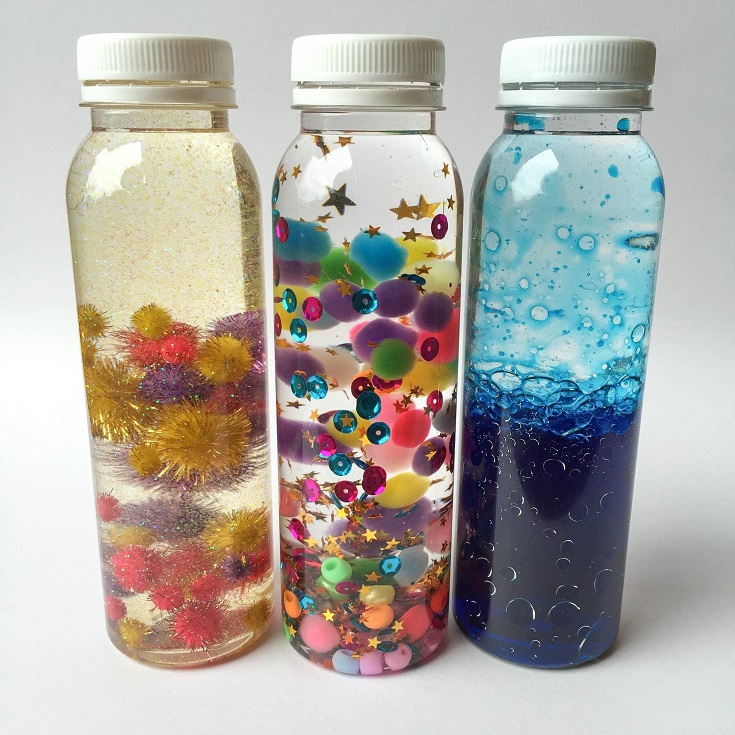
Sensory Bags
Sensory bags are all about the tactile experience – squeezing them and moving items inside them. To make them you need a plastic bag (for the freezer), some kind of liquid (shampoo or shower gel works best) and some items you will put inside. You can put anything, but it’s important to watch for sharp edges. Secure with duct tape on all 4 sides and you are good to go! Sensory bags are appropriate for any age. For young children who could try to put them in their mouth, you could tape them on the floor. Sensory bags are amazing tools because they can be used in many different modes of play. From simple motoric manipulation to tracing letters and numbers or even storytelling. Bonus: no cleaning after play! 🙂
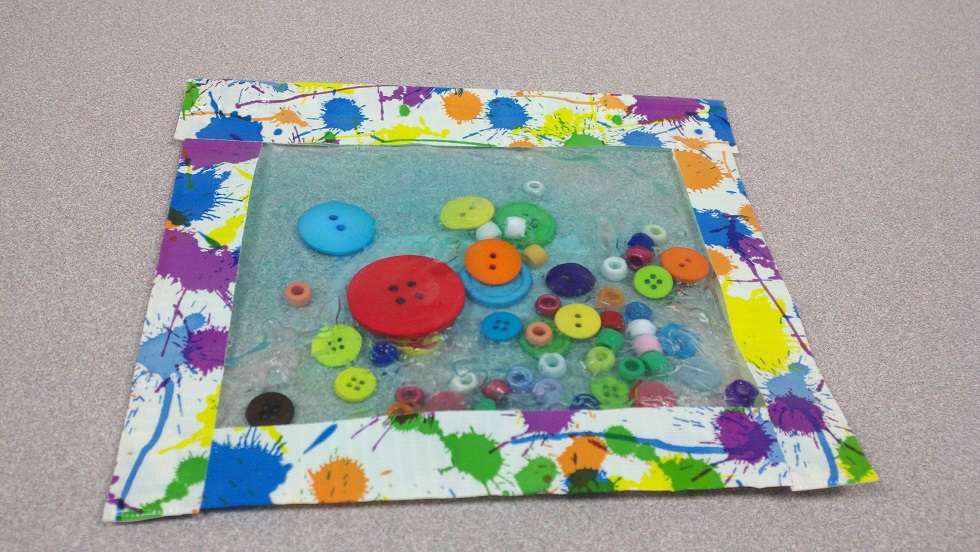
Sensory Sticks
Sensory sticks are so simple to make, but they provide tons of fun for the little ones. Chewing, pulling, touching – anything goes!
You make them by gluing various interesting textures on the wooden popsicle. Use simple household objects (carpets, socks, buttons…) and give your child a chance to explore different textures – soft, coarse, hard, fluffy… Colorful materials of different shapes and sizes provide tons of visual stimulation.
There are so many ways to make them, try different combinations to see what will be the most interesting to your child. This sensory toy is perfect for traveling – small and easy to bring along but can provide a lot of entertainment. Give it a try!
Sensory Boards
Sensory boards are little harder to make but so worth the effort! You will need wooden or styrofoam board as a base and some tools to attach various objects on it. There are really no rules afterward, put whatever you think will interest your child. Here are some ideas:
-
- different types of textures (carpets, ribbons, wool, silk)
-
- manipulative objects like chains, screws, door knobs, zippers, belts, laces
-
- mirrors and other reflective surfaces
-
- beads, buttons, magnets
-
- blocks, letters, numbers
- sound producing surfaces, drums, xylophone, sticks
Again, children of any age can benefit from playing with sensory boards with little creative adaptation of materials. The great thing about sensory boards is that they can provide multiple types of sensory inputs (touch, sound, smell, sight…). They really are an amazing tool for discovery and exploration.
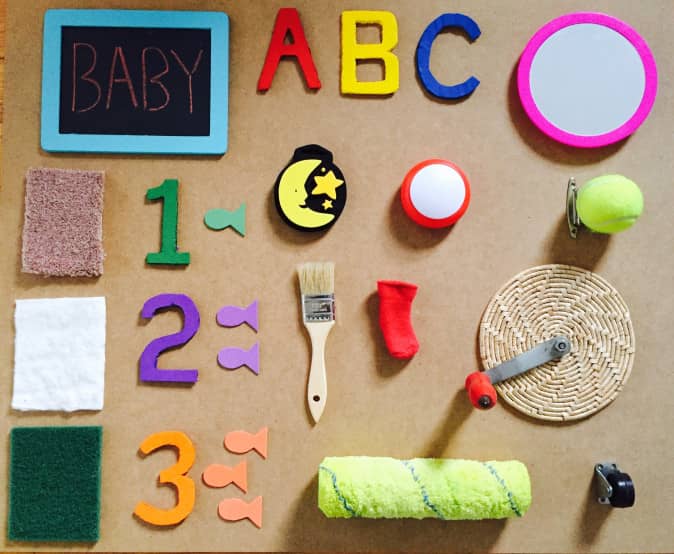
Quiet Books
Quiet books are also in the domain of more challenging ways to provide sensory activity. Most often they require some sewing skills and sewing machine, but some versions can be made by using a glue gun. They are essentially a collection of pages made from felt (most often) with various (quiet!) activities. For example, you can put different fruits that can be sorted into baskets, zippers, and laces, letters and numbers, parts of the human body… Again, no rules, whatever you think will entertain your child. Quiet books are best suited for toddlers, focusing on skills like ordering, sorting and building fine motor skills. They provide a way for a child to entertain themselves and at the same time practice their fine motor skills. Since quiet books are light and easy to carry, they are great to have while traveling.
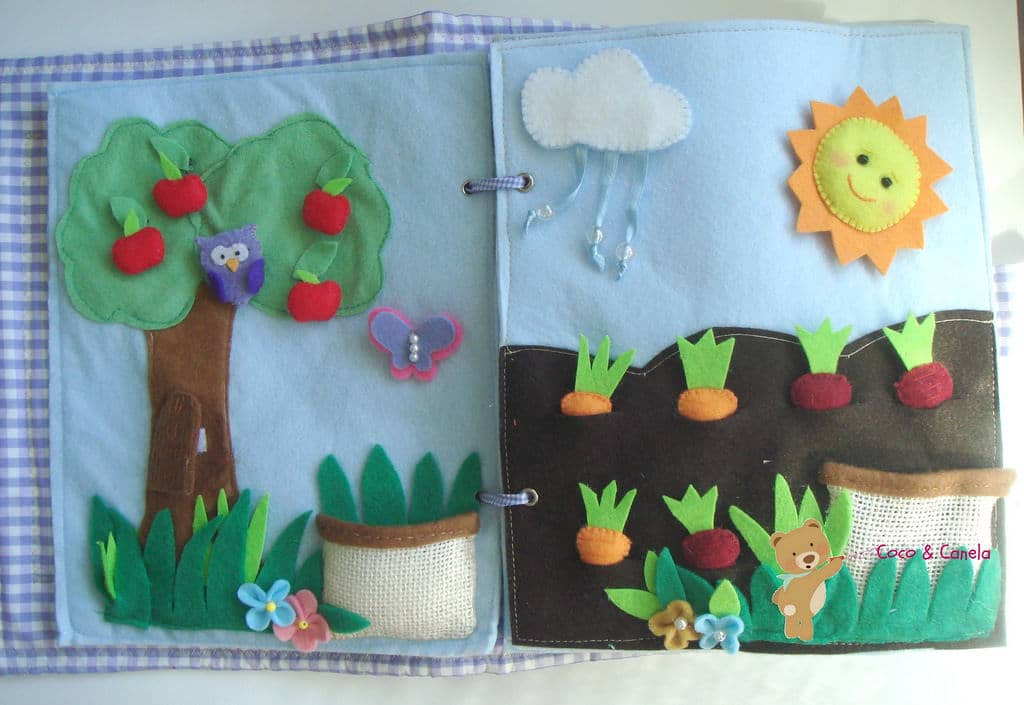
Mushy substances play
Mushy substances are a broad category of activities. Important characteristics are interesting textures and tactile experiences, easy manipulation by squeezing, ability to shape in different ways… Examples are playdough, jello, slime, kinetic sand, and fingerpaint. You can check out how to make homemade playdough as well as fingerpaint in our previous articles. These type of activities are not only amazing for exploration and fine motor skills but also provide an opportunity for creative free form play and expression.
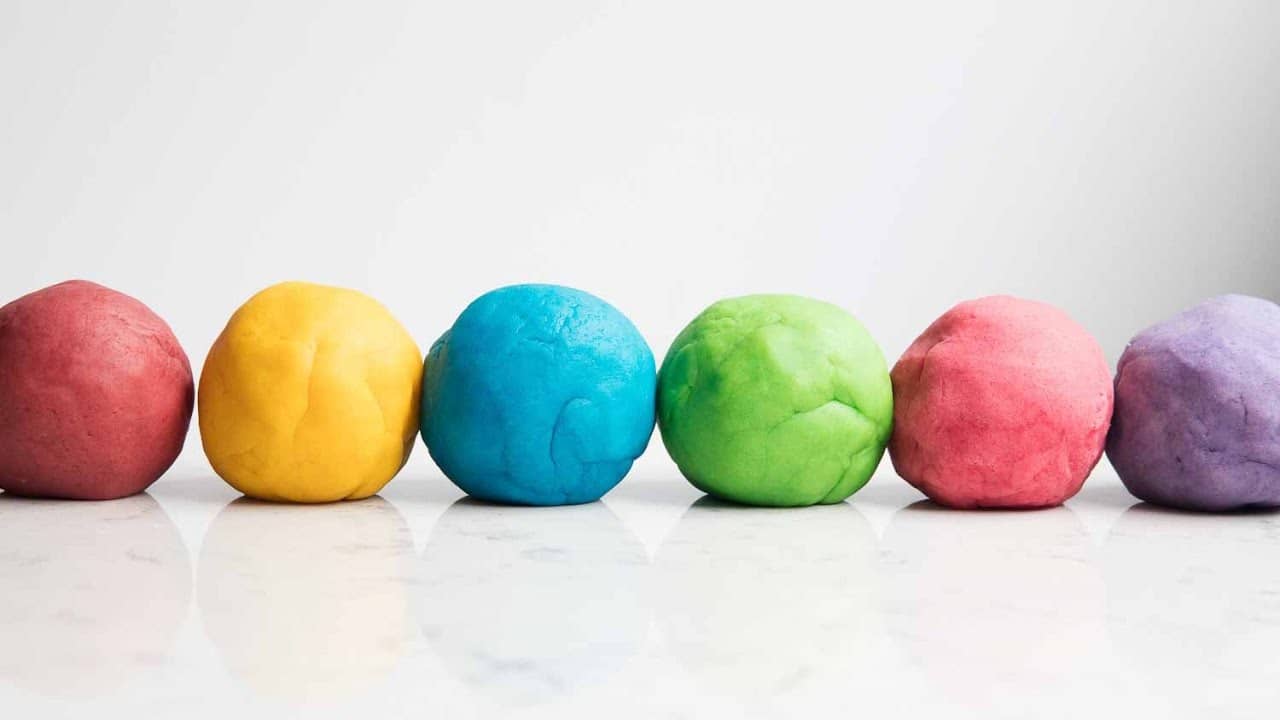
Hard substances play
Unlike mushy substances, hard substances can’t be easily shaped but can provide different type of tactile experiences through their texture and color. Examples are different shapes of stones, colored pasta or spaghetti, rice… They are sometimes used for building more complex shapes, like a spaghetti tower. They can also be used for exploring different scientific principles (measuring, mixing, transferring between bowls…). These activities provide an easy way to practice different motor skills and can be a great creative outlet.

Water play
Water play is probably the simplest way your child can engage in sensory activities. All you need is water! Other great companions are some cups and bowls for measuring or items on which you can test their floating capabilities…There are really many interesting scientific principles to explore with water. For example, you can learn about aggregate states with melting ice! Or about volume and displacement by measuring the rise of the water after putting certain items in it. Younger children can explore different sensations with hot and cold water, mix potions or just splash around. Fun is guaranteed!
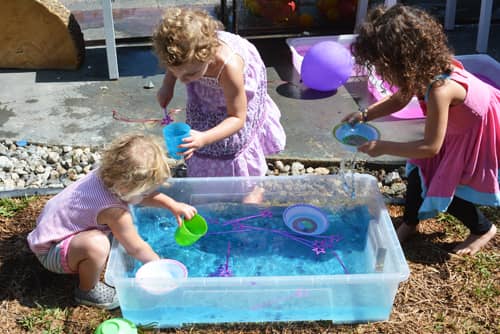
Conclusion
Hopefully, this gave you some insight into the importance of sensory play. Use these ideas on how to include it in everyday life. These activities help your child to discover and explore new sensations and build a better understanding of the world around him. Consequently, it will help him to develop a wider range of motoric skills and ways to express himself. Supporting sensorimotor development means all other skills will be easier to learn since there will be a strong base to build upon. As you can see in our activities, most of the materials are everyday things you can easily get and combine. Be creative, experiment, see what is best for your child. Being responsive to your child needs and following his lead in the play, are things that turn any activity into an activity that promotes a child’s development.
If you’re searching for some great STEM Activities for Kids and Child development tips, you’re in the right place! Check the Categories below to find the right activity for you.

STEM Science
Videos, guides and explanations about STEM Science in a step-by-step way with materials you probably already have at your home. Find new Science ideas.
Read more
STEM Technology
Videos, guides and explanations about STEM Technology in a step-by-step way with materials you probably already have at your home. Find new Technology ideas.
Read more
STEM Engineering
Videos, guides and explanations about STEM Engineering in a step-by-step way with materials you probably already have at your home. New Engineering ideas!
Read more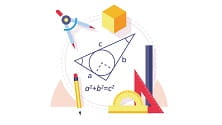
STEM Math
Videos, guides and explanations about STEM Math in a step-by-step way with materials you probably already have at your home. Find new Mathematics ideas.
Read more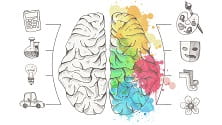
Psychology
Find out all about development psychology topics that you always wanted to know. Here are articles from child psychology and development psychology overall.
Read more
First year of Child’s Life
Following a Child’s development every month from its birth. Personal experiences and tips on how to cope with challenges that you will face in parenting.
Read more
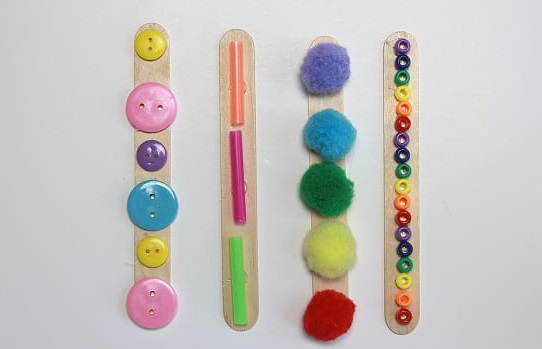
9 thoughts on “Sensorimotor activities for children”